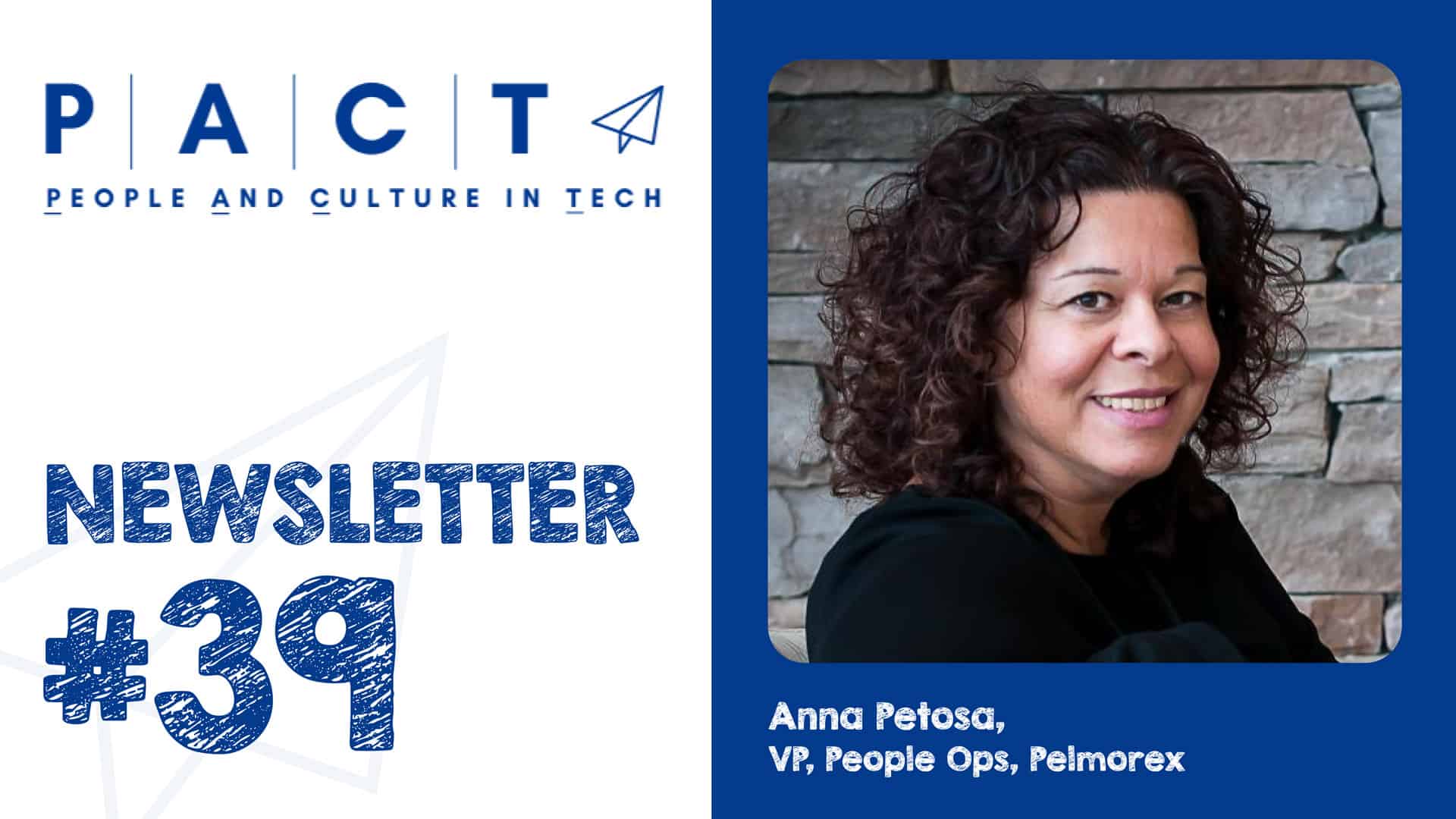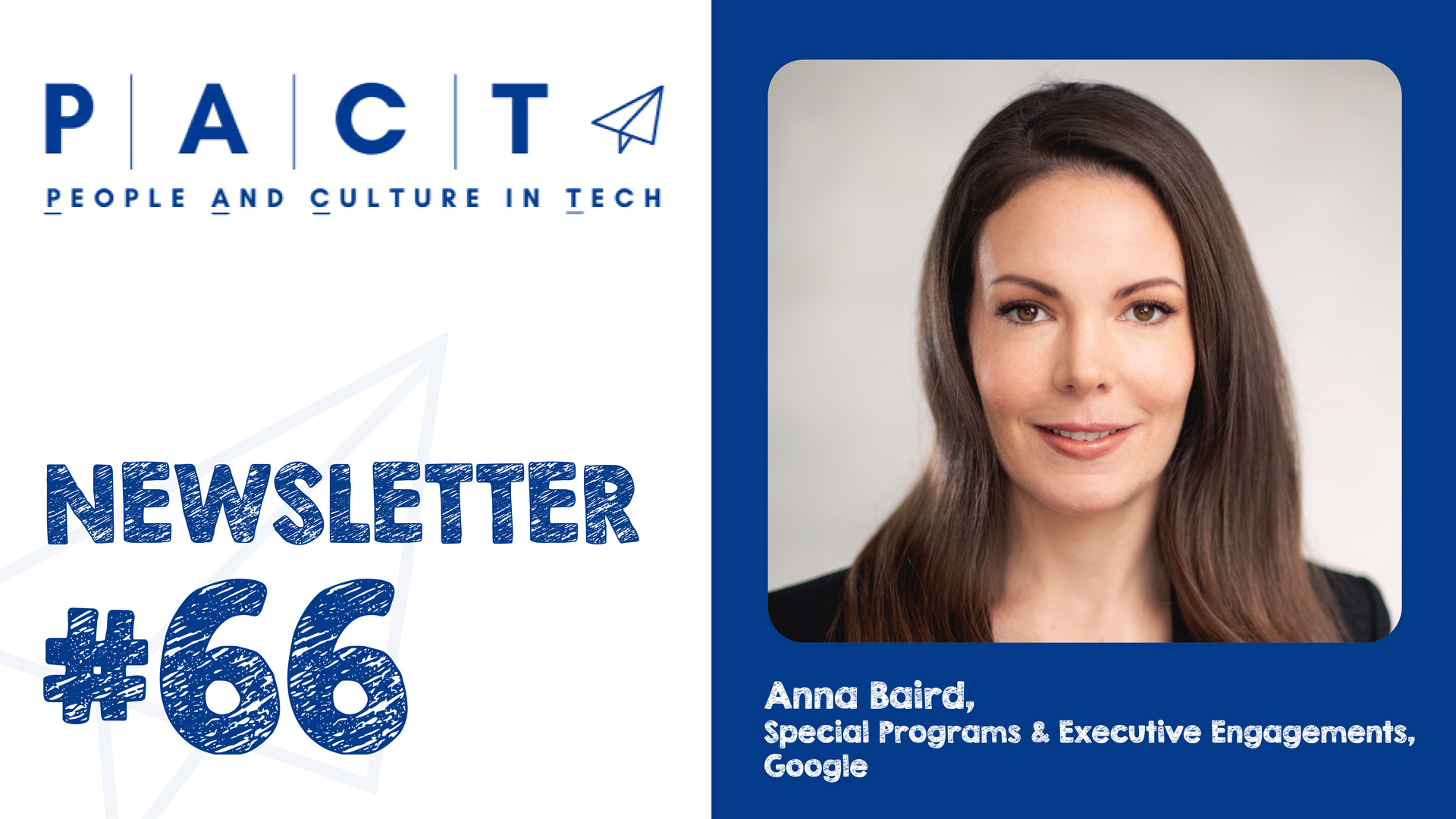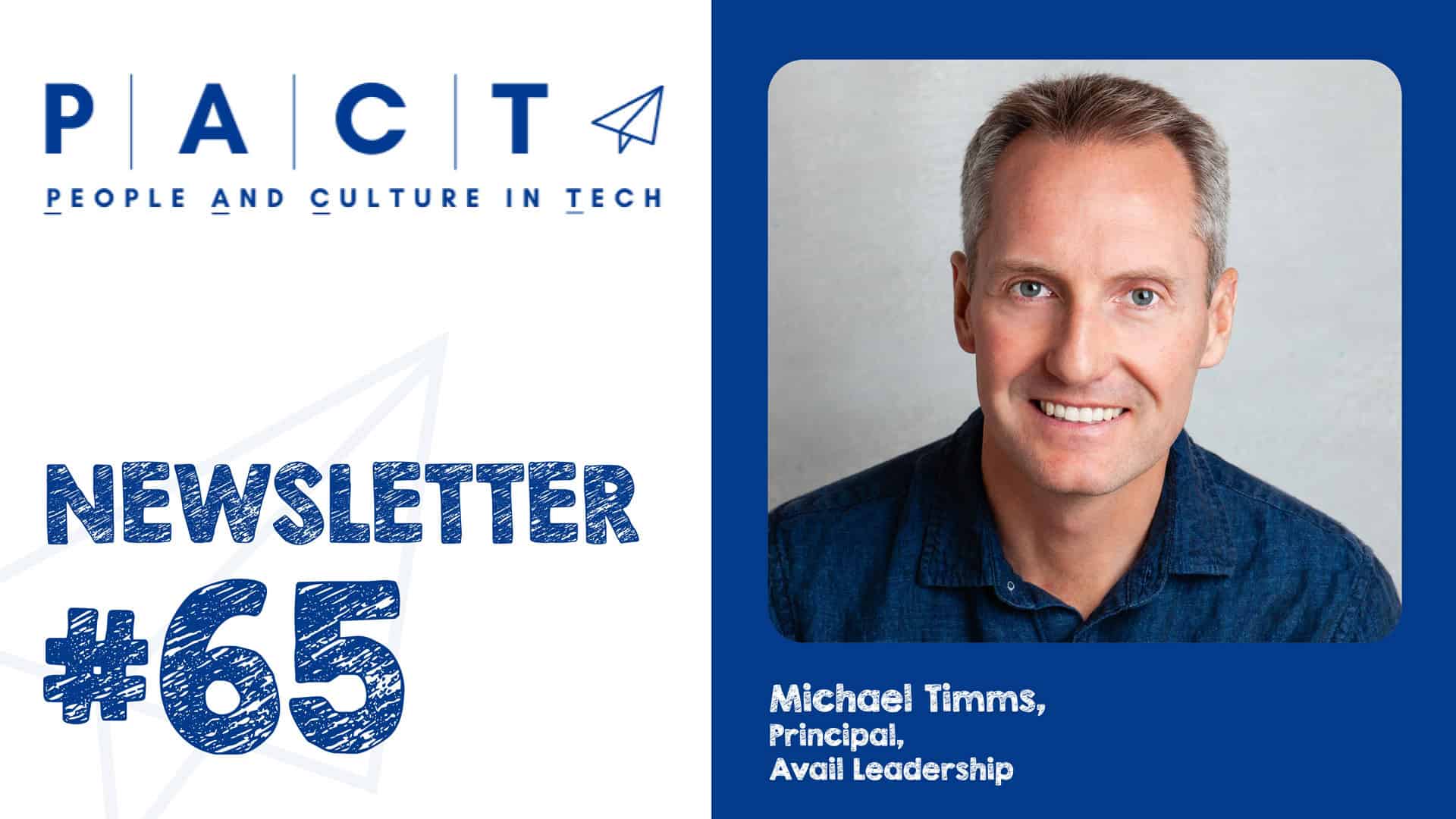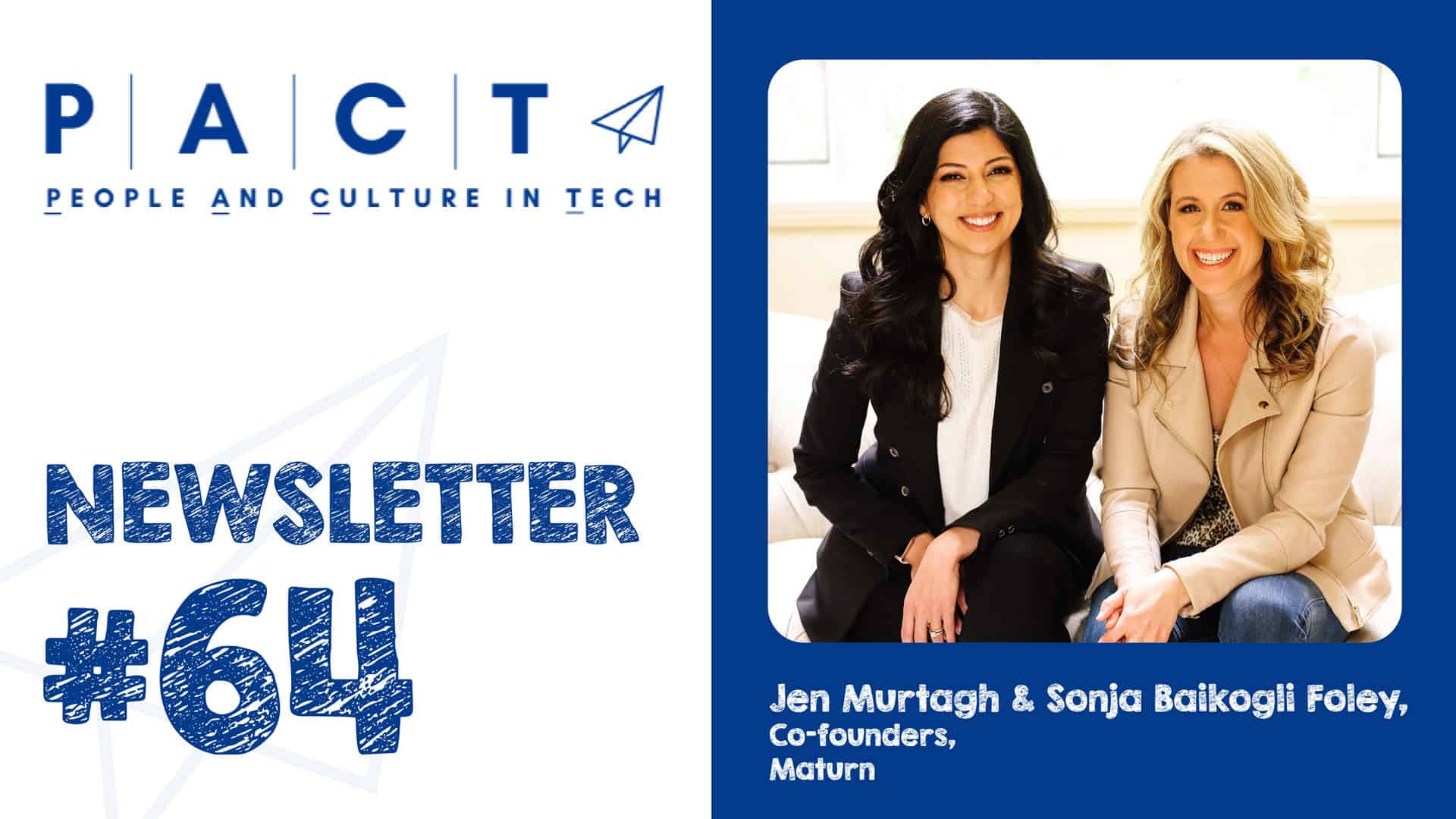Anna Petosa Champions Human-Centred Leadership in a Hybrid World
Jason McRobbie

While putting people first in the minds of decision-makers has been a mainstay of strategic HR for some time, the recent pandemic and waves of social revelation have put a renewed priority on human-centred leadership across the board. We sit down with Anna Petosa, VP of People Operations for Pelmorex—an international weather information and data management company. Pelmorex owns and operates the weather brands The Weather Network, MétéoMédia, Eltiempo.es, Clima, and Otempo.pt - to talk about the revolution in antiquated leadership and the toolkit required for human-centred leadership to thrive.
Key Takeaways:
- Human-centred leadership is hinged upon taking care of your people so that they will take care of the business;
- Leaders need to commit to practices and policies that reflect their commitment to connection and building relationships; and
- The cost of taking the time to get to know your people is always less than the cost of replacing them.
After nearly a quarter century of pushing for human-centred leadership, Anna Petosa, VP of People Operations for Pelmorex, is no longer the HR rogue she once was. Instead, she has garnered true acceptance as a bellwether of better business whose long-held leadership philosophy has found both a home and a growing audience—even if her two teenagers are still confused about what she does for a living.
As we sit down to talk about the fundamentals of human-centred leadership and why it still remains a challenge for many organizations, she laughed and admitted to having been a bit nervous about our interview—thanks in part to her kids.
“I have a 17 and a 14 year old who do an amazing job of keeping me humble. On Sunday nights we talk about what we have on our plates for the week and I told them I was doing this interview with you and was feeling nervous, hoping I had some valuable nuggets to impart,” Anna shared. “They just looked at me and said, ‘Yeah, what do you even do? You’re just in meetings all day talking and laughing, having a great time.’ That’s what they took from watching me work from home during the pandemic.”
With both of us now laughing, I realize just how good Anna is at disarming with the very human touch we are set to discuss.
“I would say that human-centred leadership is really about relationships. I have been a huge fan and follower of Josh Bersin for many years and he has done a ton of research in this area,” said Anna. “For me, it’s about nurturing human connection and human relationships. It’s about creating an environment where it’s ok to say you don’t have all the answers, it’s about being authentic, vulnerable and creating dual or two-way feedback and collaboration built on a foundation of deep trust.”
“I’ve always subscribed to this type of leadership philosophy, but I do think it’s been heightened during the pandemic because people were hitting a wall. They were dealing with a lot, all at once. We needed to show up differently as leaders during the pandemic and still do. I think there is higher accountability for employers. Employees are asking way more of their leaders than they have in the past,” she added. “They want leaders to be authentic, vulnerable, care about them as a person and genuinely care about why they might not be showing up at 100% at work. I do think the balance of power is shifting.”
She admits that it has been an uneasy transition for many and that some are even attempting to reassert more old-school, command-and-control cultures. She shares the story of a friend just starting out in the workforce who received a warning letter from head office recently because their cat was on screen too much during meetings.
Another friend of hers, a seasoned HR professional, cut ties with her employer without a job to go upon learning software was being installed on employee’s computers to take random screen shots throughout the day—without prior conversation or consideration of the people impact. “She thought, OMG, this is so fundamentally wrong, and it all goes back to human-centric leadership and trust. If you take care of your people, your people will take care of your business,” said Anna.
“During the pandemic, people were dealing with so much and I don’t think they should have been expected to compartmentalize. We saw windows into people’s personal lives, complete with all sorts of pets, crying babies and family dynamics, so sometimes we just had to take a pause to put the little person on a lap, involve them in the conversation. What’s your cat’s name? What’s your dog’s name?” said Anna. “To hear that some companies have already lost those leadership lessons—in what universe is that okay?”
It was a reminder that her that her own less happy yesterdays remain the today of many others.
“I was raised in a very hierarchical work tradition, command-and-control type of leadership. You did what you were asked because the idea that your boss knew more was engrained in me. I remember that not making me feel great. My energy has always come from going rogue, questioning the status quo, shaking things up, whether that is in my personal or professional life,” said Anna.
“There’s this old adage that as a leader you have to wear what Brene Brown calls your armour and you apparently need this armour to show up as a leader,” she said with a dismissive wave. “Please, the 1980s called and wants their leadership armour back. It doesn’t work anymore. Today, a true leader is human-centric and that is all about being vulnerable, about being empathetic and being humble.”
For Anna, going rogue has always meant doing what’s right, not what’s easy. What that has translated into is a leadership approach that has always put people at ease and empowered their greatest efforts. Without a doubt, that became more challenging during the pandemic, but served to foster hybrid-friendly policies that have served them well since.
“You get to know your teams and what they are dealing with, but that really became a challenge during the pandemic. As part of one of our leadership programs developed with an external partner, we adopted a numeric check-in system that made it easy for people to talk about what was going on in their lives that could potentially impact their work. It gave everyone permission to be themselves. So we would ask each other, “What’s your number today: 1-10?” said Anna. “Even if we had a whole one-on-one agenda, if you are a 6.5, we’re just going to park that and talk about what’s happening, how I can help and how we can get you closer to 10.”
On the flip side, Anna feels equally comfortable with her team and has openly called herself out as “crusty” with her team from time-to-time and cancelled a meeting for everyone to get outside, stretch legs and refresh minds.
“In my experience, I find you just get so much more from people, the willingness to offer up that discretionary effort and channel that energy when they see that you care about them as people. You care about what makes them thrive and hope—their child’s piano recital on the weekend, their dog’s vet appointment, their aging parents,” said Anna. “When they don’t need those filters, it gives people the freedom to show up for work as who they truly are and that’s empowering and liberating.”
Of course, in order to do so, you also have to delve into these human details, which entails a healthy dose of active listening in the human-centred leadership toolkit.
“Active listening means you are listening to understand, not just listening to be able to react or respond. These are all nuances that really require us to be intentional about leadership, about how we show up, but also intentional about how much compassion and empathy we show up with,” said Anna. “It takes time and people already have 12 pounds of peanuts in a 10 lb bag. You have to be authentic and commit to it. Asking how someone is without acknowledging their response before moving on with your agenda is worse than not asking.”
And while screens often separate in the hybrid era, Anna sees opportunity: “Read body language, read facial expressions—the screen gives us that benefit. It requires us to be that much more present ourselves, so we should pay more attention to what we see on other screens and react to that. It’s going to feel clunky and weird the first few times, but it feels good then great after a while.”
The importance of that only became amplified during the unprecedented remoteness of the pandemic and demanded in the wake of multiple social injustice revelations.
“For me, it really comes down to the authenticity piece. How willing are you to admit that you screwed up? Some of the most powerful conversations come through apologies. We’ve done a ton of work on DEI over the past three years with an incredible partner and one of the many things they taught us was the art and importance of apologizing. That to me is just so powerful,” said Anna. “As a leader, it’s simply a matter of admitting, ‘You know, I messed that up and I’m really sorry. This is how I messed up and this is how I am going to do better.’”
As a leader, she is adamant about sharing mistakes and bad days with her team. After all, she would not want them holding back from her on either front.
“It’s about using that authenticity and vulnerability as a leader to make it okay to not be okay, to create an environment where trust is the foundation,” Anna said. “We’re hearing so much buzz about psychological safety, but that is really about building trust so that people on your team are comfortable enough to say, ‘That was not so great’ or ‘This is what I need and I am not getting it’ without fear of repercussion.”
One side shoot of such a discussion is now reflected in Pelmorex’ bereavement policy—and serves as ample illustration of human-centric leadership in the most unconsidered of places.
“One of the things that we did recently was to update our bereavement policy to include pets. I am not a pet person, but I know a lot of people who are and I saw the grieving process they went through—it’s a family member,” said Anna, elaborating on how this led to a humane revision to bereavement policy in general. “Who are we to say you get five days and you need to take them consecutively? Someone might be really suffering and need more time off. We’re going to figure that out and make it work.”
Moreover, as Anna has witnessed time and again, the return on investment is exponential: “When that person comes back, their productivity, their loyalty, their trust are there and then some. You can’t build that through words alone.”
As for those who still eschew the human-centric view as a sign of a weak business mind, a reminder that Anna is not only testament to the contrary, but well-versed in the argument.
“It doesn’t mean you don’t care about the business and I have had this debate in the past. They say, ‘Well, we are here to deliver bottom line and top line results. We have a business to run,’” said Anna. “And I always say, ‘I know. I’m not saying we have to pause that because we are too busy putting bubble wrap around employees. It is not an either/or. It is a spectrum of human elements of leadership WHILE running the business and how you respond to each situation needs to be intentional—grounded in really thinking about the people.’ That to me essentially is what human-centred leadership means. You’re able to put people first by really getting to know them.”
She relates recently bringing the team over to her house for a holiday gathering but stresses the year round importance of finding those human moments. “It goes back to that human connection, and I think that’s why it’s so important in a hybrid world because it makes it more difficult to create those relationships and that connection. That same stickiness isn’t inherently there that was there in person and it’s harder to build in a hybrid world. That’s why it’s even more important for us to amplify it.”
Anna admits that it’s also way easier said than done.
“I think that’s why I was nervous about this call. I kept thinking, I really don’t have anything earth-shattering to share—this is just how I operate. But I realized, it doesn’t come naturally to everybody, but everybody can benefit,” she said. “As a leader in a hybrid age, it is not only about how we react to those crying babies, barking dogs and cats wandering on screen, but how do we embrace them as windows into our real lives?”
BACK








